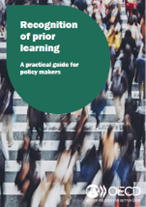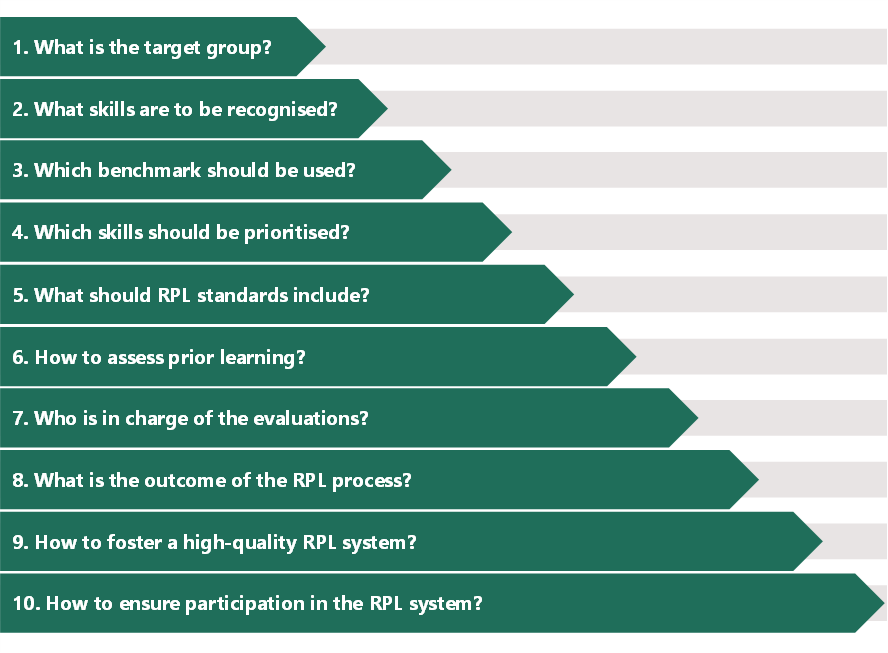By Patricia Navarro-Palau and Michele Tuccio

Recognition of Prior Learning (RPL) is an essential tool to improve the employability of adults and to (re)engage them in education and learning, especially for adults without formal qualifications. The new OECD brief Recognition of prior learning: A practical guide for policy makers introduces a toolkit aimed at helping policy makers establish successful validation systems.
Why set up a recognition of prior learning system?
Recognition of Prior Learning (RPL) allows adults to formally validate the knowledge they have acquired in informal settings, such as on the job or while volunteering, or in non-formal settings, such as in training courses that are not part of the formal education curriculum. This validation can open up better job opportunities as well as grant access to or shorten further upskilling opportunities by defining personalised learning pathways. On the other hand, RPL is also a key tool to help adults understand their skills gaps and identify training options. It supports adults going through job transitions by exposing skills that can be valuable across professions, and it helps migrants and refugees to integrate more quickly into their host country labour market by delivering national formal credentials.
How to set up a recognition of prior learning system?
Each validation system has its specific features, which can vary significantly depending on the goal of the system, its target group, the type of competences being validated and the local context. To disentangle the complex web of choices to be made for the development of a validation framework, the newly released OECD publication Recognition of prior learning: A practical guide for policy makers [link] offers, for the first time, a 10-step guide of the sequence of key decisions that institutions must make to develop an effective RPL system. The description of each decision includes commonly used options as well as OECD best practices.
Figure 1. A 10-step process to set up recognition of prior learning system

The first decision that institutions developing a validation system must make is who the potential beneficiaries of the system will be (Decision 1): should the system be open to everyone, or should it target a subgroup of the population? Then, the type of skills that can be recognised through the system should be chosen (Decision 2). Validation systems can assess general skills, such as literacy or numeracy, or job-specific skills. These two decisions have an impact on subsequent decisions, as well as on the institutions that should be involved in the governance of the validation system.
Once the potential beneficiaries and the skills assessed by the validation system are defined, the benchmark used to evaluate and validate skills must be decided (Decision 3). Typically, national RPL systems use the qualifications defined in the National Qualification Framework (NQF), occupational standards or industry standards as a basis and adapt them to serve as a guide and benchmark for the RPL process. If the system does not rely on already defined frameworks, the occupations or qualifications to prioritise should be identified (Decision 4), and the information included in the RPL standards should be determined (Decision 5).
Once the benchmark for the RPL process has been defined, the evaluation methods must be chosen (Decision 6), as well as the professionals in charge of conducting the assessment (Decision 7). Institutions must also decide what type of certificate will be awarded at the conclusion of the RPL process (Decision 8), as well as any additional post-validation support provided. Finally, the last two Decisions ensure the high quality of the validation system (Decision 9) and the development of awareness raising activities to boost the use of the system by potential beneficiaries (Decision 10).
Interested in knowing more?
Read more about the possible options for each step and best practices across the OECD here.
Sign-up for the OECD webinar Implementing Recognition of Prior Learning: A conversation with experts on 6 October 2023 here to find out more about how to build an effective RPL system and hear the hands-on experience of policy makers and practitioners that have established successful validation frameworks across the OECD.
